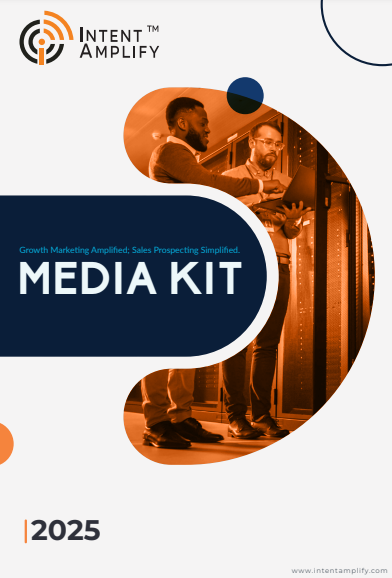
How to Write SaaS Emails Copy That Feels Human & Not Automated
- Last updated on: October 24, 2025
In the realm of SaaS marketing, email remains a cornerstone of engagement. However, as automation becomes more prevalent, many emails risk sounding robotic, losing the personal touch that fosters genuine connections. This article delves into strategies to humanize your SaaS email copy, ensuring it resonates authentically with your audience.
Why Most SaaS Emails Still Feel Robotic
The rise of automation tools has streamlined email marketing, but it has also led to a surge in generic, impersonal messages. According to Growth Onomics, the average open rate for email marketing in 2025 is 42.35%, with click-through rates (CTR) averaging 2.00% across industries. However, these numbers can be misleading, as they encompass both personalized and generic emails. B2B SaaS emails often fall into the trap of sounding automated due to the following points:
- Over-reliance on templates: While templates can save time, they can also make emails sound formulaic and impersonal.
- Lack of personalization: Failing to tailor content to the recipient’s needs and stage in the customer journey can result in disengagement.
- Generic subject lines: Subject lines that don’t speak directly to the recipient’s pain points or interests can lead to low open rates.
- Overuse of jargon: Excessive technical language can alienate recipients and make the message harder to digest.
The Humanization Framework for SaaS Emails
To craft emails that feel personal and engaging, consider the following strategies:
1. Empathy and Customer Understanding
Begin by understanding your customer’s challenges, goals, and aspirations. Empathetic messaging demonstrates that you genuinely care about their success. For instance, instead of stating, “Our software increases efficiency,” say, “We understand the challenges of managing multiple tasks; our software helps streamline your processes, saving you time and reducing stress.”
2. Tone and Voice Consistency
Maintain a consistent and approachable tone throughout your emails. Avoid sounding overly formal or robotic. Use conversational language that mirrors how your audience communicates. This approach fosters trust and makes your brand more relatable.
3. Storytelling and Micro-Narratives
Incorporate brief stories or case studies that illustrate how your product has positively impacted users.
For example, “Jane, a project manager at XYZ Corp, reduced her team’s reporting time by 30% using our tool.” These narratives make your emails more engaging and help recipients envision the benefits of your product.
4. Timing and Context
Send emails at times when your audience is most likely to engage. For instance, avoid sending emails during weekends or late hours. Additionally, ensure that the content is relevant to the recipient’s current stage in the customer journey. Personalized timing and context can significantly increase engagement rates.
Personalization Beyond the First Name
Personalization extends beyond addressing the recipient by their first name. Tailor your content based on the recipient’s behavior, preferences, and interactions with your brand. According to Instapage, personalized emails achieve a 29% higher open rate and a 41% higher click-through rate compared to non-personalized emails.
Utilize data such as:
- Previous interactions: Reference past purchases or inquiries to make the email more relevant.
- Behavioral triggers: Send emails based on actions like downloading a whitepaper or attending a webinar.
- Demographic information: Customize content based on the recipient’s role, industry, or location.
Leveraging Automation Without Losing the Human Touch
Automation doesn’t have to mean impersonal. By using advanced segmentation and dynamic content, you can deliver personalized messages at scale. Tools like HubSpot and Marketo allow for behavior-based triggers, ensuring that each email feels timely and relevant.
For example, a user who has just signed up for a free trial might receive a welcome email with tips on getting started, while a user who has been inactive for a while might receive a re-engagement email offering assistance or additional resources.
Measuring the Impact of Humanized Email Copy
To assess the effectiveness of your humanized email campaigns, monitor key performance indicators (KPIs) such as Open rates, Click-through rates (CTR), Conversion rate, and Engagement metrics.
Open rates indicate how compelling your subject lines are. Click-through rates (CTR) show how engaging your content is. Conversion rates measure how well your emails drive desired actions. Engagement metrics include replies, forwards, and social shares.
According to Campaign Monitor, personalized subject lines increase email open rates by 26%. Additionally, emails with personalized content can lead to higher conversion rates and customer satisfaction.
Balancing Automation and Humanity
While automation tools are invaluable for scaling email campaigns, they should not come at the expense of personalization and empathy. By understanding your audience, crafting authentic messages, and leveraging data-driven insights, you can create SaaS email campaigns that not only reach your audience but also resonate with them on a human level.
FAQs
- What is humanized email copy in SaaS marketing?
Humanized email copy refers to messages that feel personal, empathetic, and relevant to the recipient. Unlike generic automated emails, humanized emails address specific pain points, reflect the customer’s context, and use a consistent, approachable tone.
- How can personalization improve engagement in SaaS emails?
Personalization goes beyond first names. It includes behavioral triggers, product usage, industry relevance, and lifecycle stage. Personalized emails can increase open rates by up to 29% and click-through rates by 41%, according to industry benchmarks.
- Can automation and humanized copy coexist effectively?
Yes. Automation can handle scale and timely delivery, while humanized copy ensures authenticity. Using behavior-based triggers, dynamic content, and empathetic messaging allows SaaS marketers to balance efficiency with personalization.
- What common mistakes make SaaS emails feel robotic?
Over-reliance on templates, generic subject lines, excessive jargon, and lack of behavioral personalization are the main culprits. These mistakes reduce engagement and can alienate potential leads.
- How do I measure if my SaaS emails feel human and engaging?
Key metrics include open rates, click-through rates, replies, and conversions. Engagement improvements after personalization or humanized messaging indicate that your emails resonate with the audience. Surveys or A/B testing subject lines and copy tone can also provide qualitative insights.




